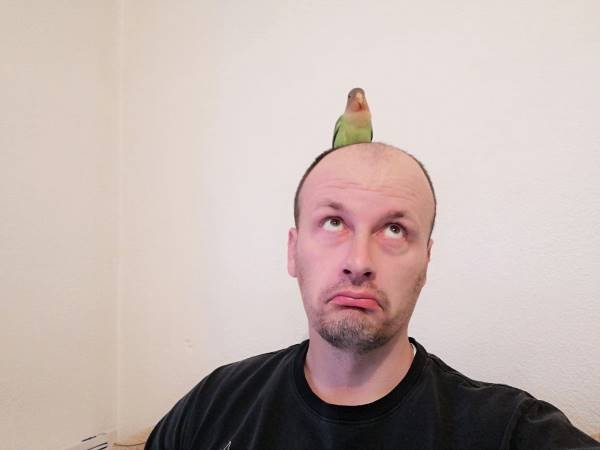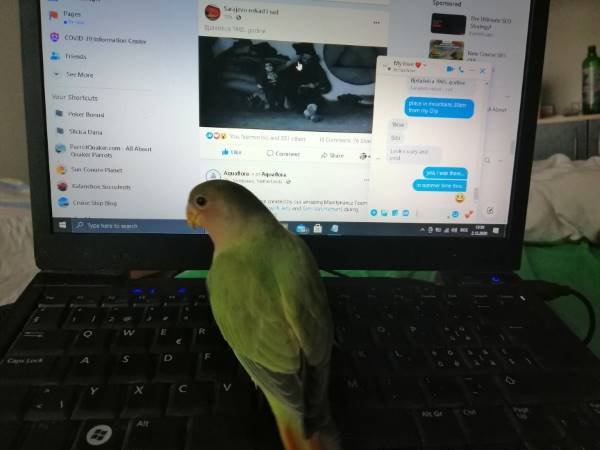Lovebirds are intelligent, active little birds that make great pets. They are known for being very affectionate with their owners and can even learn tricks!
If you’re thinking about getting a lovebird, or if you already have one, read on for some essential tips on how to train your lovebird.
Bild trust
The first step to training your lovebird is to build trust. You need to earn your lovebird’s trust before you can start training them.
However, building trust with a lovebird is not an easy task. Lovebirds are very sensitive animals and they need to be treated with care. They will not trust anyone easily, but there are a few things you can do to help your lovebird get used to you and start to trust you.
The best way to gain the trust of your lovebird is to spend time with your bird every day. Talk to them, pet them, and offer them treats and never force them to do things or treat them harshly just because you get impatient with them.
Try offering your lovebird some food from your hand. If they take it, well, that’s great! If not, don’t worry, just keep trying.

Once they start taking food from you, you can start working on some basic training.
Don’t skip this step as it is very important. Give it some time before you move on with the training and you’ll be sure to win your lovebird’s heart in no time.
Choose the right time to train your lovebird
You should start training your Lovebird when it is around 4 to 6 months old. This is because younger birds are not yet fully mature and may not be able to understand or respond to training as well.
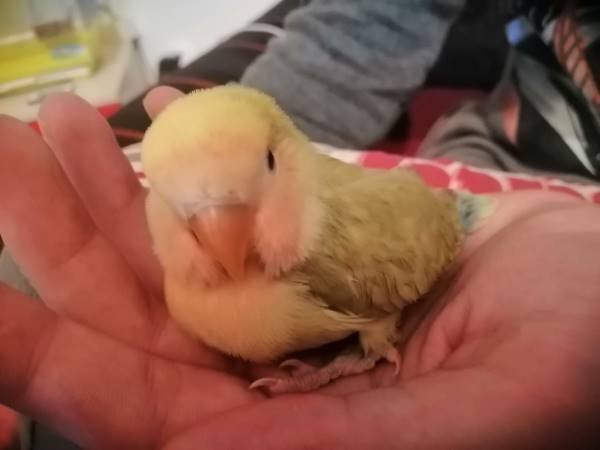
It is also important to choose a time when you are relaxed and patient, as training a bird can be frustrating at times.
Make sure you have plenty of time set aside so that you do not have to rush through the process.
Start with basic commands
Before you start training your Lovebird, it’s important to understand that every bird is different and will learn at their own pace. With that in mind, start with the basics and build up from there.
Start with simple commands, like “come” or “step up.” When your bird is used to the training and can master these simple tasks you can start working on more difficult commands.
With patience and time, you can train your lovebird to do tricks, like flying to you or perching on your finger.
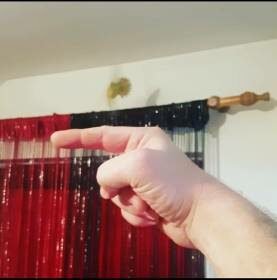
But to start with, teach your lovebird to step up.
Close all windows and doors in the room and remove all objects that are dangerous or delicate. Also don’t forget to close the curtains so that the bird will not fly into the window.
Now be very patient. Open the cage and slowly insert your hand while speaking in a slow, soft tone.
When the bid picks on your hand don’t take it back as this will train the bird that it can attack you with success. But when the bird jumps on your finger give it a treat and gently take it out and allow the bird to fly around freely.

But don’t run after your bird and try to catch it again when you think it’s time for it to go back into the cache! You can destroy much work you spent in building up trust if you do so.
Simply try to convince it to come back with treats or your soft voice. When your lovebird comes to you, give it a treat. This can of course take some time. But when your lovebirds get hungry it will get back into the cage on its own. But don’t force it.
Training takes time and patience, and if you get frustrated, your bird will sense it and will not respond well to the training.
Keep training sessions short.
Lovebirds are intelligent and can be trained to do tricks, but they can also be stubborn. The key is to keep training sessions short so that your bird doesn’t get bored.
Therefore be patient and keep in mind that lovebirds have a short attention span.
Best are short periods of training several times a day. Most effective are sessions of about 15-20min.
Make sure you are consistent
One of the most important things to remember when training your lovebird is to be consistent. If you only work with your bird a few times a week, he is not going to learn as quickly as if you spend time every day training him.
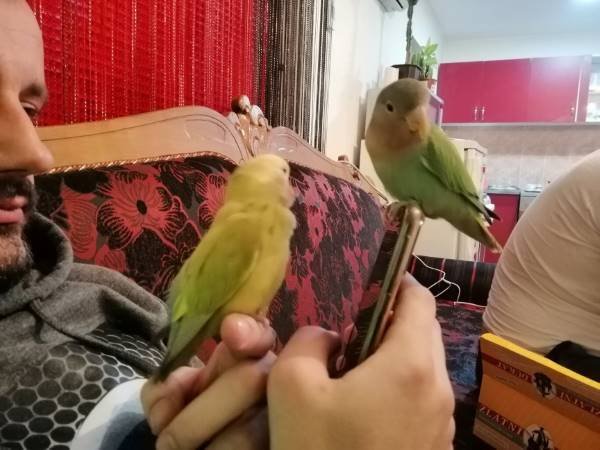
It is also important to use the same commands every time and to reward your bird for good behavior. If you are inconsistent, your bird will become confused and will not respond to your commands.
Make sure to praise and reward your bird when it does something correctly. That brings us to the next point:
Use positive reinforcement.
Positive reinforcement is a great way to train your lovebird. This means that you reward your bird every time it does something you want it to do.
For example, if you want your bird to step up onto your finger, you can give it a treat when it does. You get the idea…. Whenever your bird does something you want it to do, make sure to give it positive reinforcement.
This will help teach your bird that it is behaving in the way you want it to. Over time, your bird will learn what behaviors are desired and will be more likely to repeat them.
The most common form of positive reinforcement is offering a treat, but you can also use verbal praise or petting. Just be sure to use a happy tone of voice so your bird knows it’s doing something right.
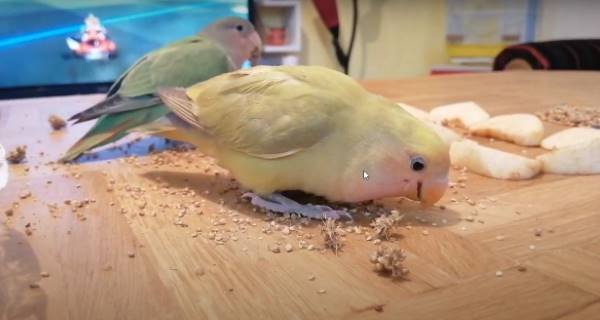
But it’s important to only reward your bird when it does something you want it to do. Otherwise, it will learn that it doesn’t have to listen to you.
Praise your bird only when it does something correctly, and never punish it for making a mistake.
Use a clicker for your training.
Clicker training is a type of positive reinforcement training that also can be used to train your lovebird. The basic idea is to pair a desired behavior with a clicker sound, which will eventually serve as a cue for the behavior.
For example, you can click the clicker every time your lovebird steps up onto your finger, and eventually your bird will learn that the clicker sound means it should step up.
Clicker training can be a fun and effective way to bond with your bird while also teaching it some useful behaviors.
Read about common Lovebird Behavior here.
Keep it fun!
Lovebirds get bored very fast. And If your bird starts to get bored or frustrated, it will be less likely to cooperate.
So make sure to vary your activities and keep things interesting. Try using different types of food as rewards, and offer lots of praise and encouragement.
End each session on a positive note.
When you’re training your lovebird, it’s important to end each session on a good note. This means finishing with a positive reinforcement, like a treat or a head scratch.
This will help your lovebird associate the training with something positive, and make them more likely to cooperate in the future.
Keep your bird healthy and happy.
A happy and healthy bird is more likely to be a well-behaved bird. So, make sure it is healthy and happy.
This means providing a nutritious diet, a clean and comfortable cage, and plenty of toys and perches. It also means taking your bird to the vet for regular checkups.
Since lovebirds are known to be highly intelligent, social, and curious, they need a lot of attention and stimulation in order to stay happy and healthy. They just love to play with their owners, other pets, or even toys.
So in order to keep your lovebird happy and healthy you should provide them with plenty of attention, toys, space for playtime, and a variety of fresh fruits and vegetables.
Don’t forget to socialize your bird.
Lovebirds are social creatures, so it’s important to socialize your bird. Spend time talking to your bird, and let it out of its cage regularly so it can explore.
It also helps to expose your bird to a variety of people, places, and things. The more socialized your bird is, the easier it will be to train them. You can start by taking them out of their cage and letting them explore their surroundings.
You can also introduce them to new people, such as friends and family members. Once your bird is comfortable with their surroundings, you can start working on training them.
How long does it take to train a lovebird?
Well, there is no one answer to the question of how long it takes to train a lovebird because it depends on the person and the time they have available for training.
However, in general, if you spend at least an hour per day training your lovebird, you should be able to train them a new trick within two weeks. But don’t get frustrated if it takes longer.
Be patient.
Training your lovebird can be a fun and rewarding experience, but it does take time and patience.
Do not get discouraged if your bird does not seem to be progressing as quickly as you would like. If you get frustrated, take a deep breath, take a break and try it again later.
With a little time and patience, you’ll certainly be able to train your lovebird and have much fun with it!

